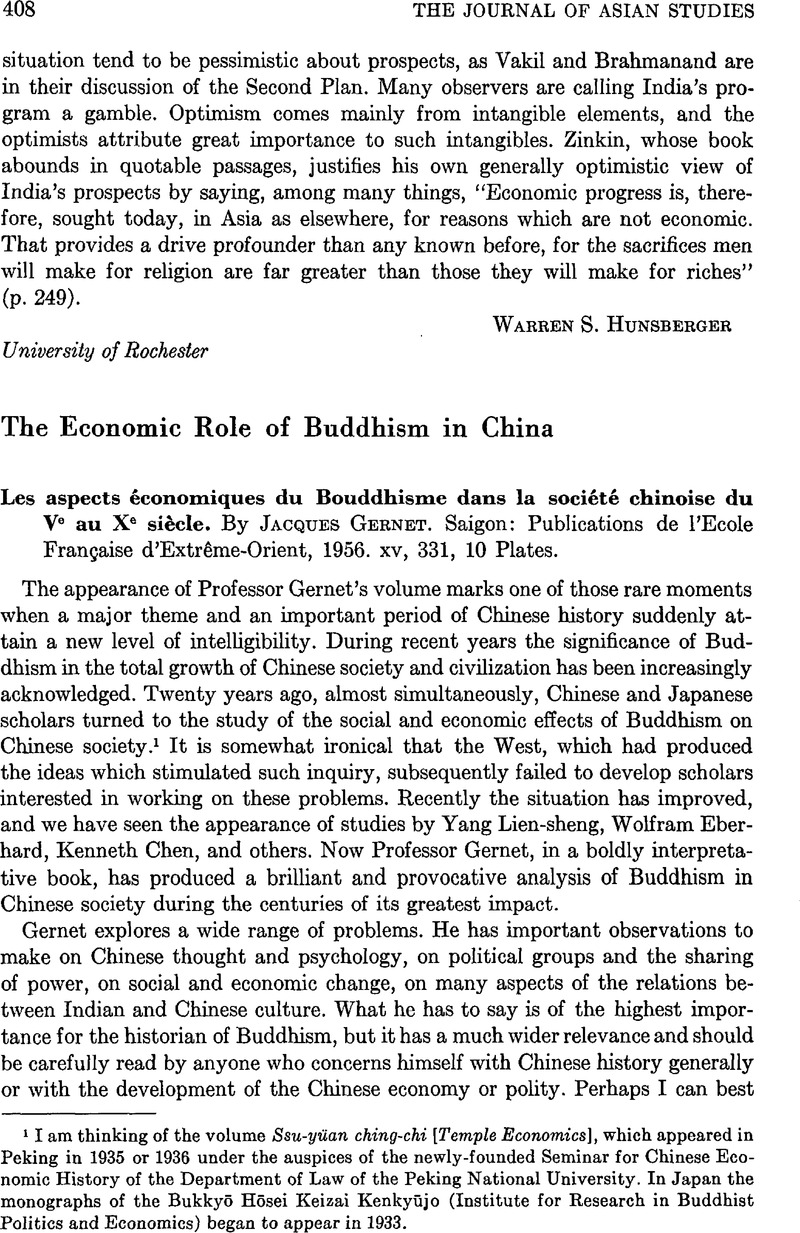Published online by Cambridge University Press: 23 March 2011

1 I am thinking of the volume Ssu-yüan ching-chi [Temple Economics], which appeared in Peking in 1935 or 1936 under the auspices of the newly-founded Seminar for Chinese Economic History of the Department of Law of the Peking National University. In Japan the monographs of the Bukkyō Hōsei Keizai Kenkyūjo (Institute for Research in Buddhist Politics and Economics) began to appear in 1933.
2 Professor Robert Redfield in his recent volume Peasant Culture and Society: An Anthropological Approach to Civilization (Chicago, 1956)Google Scholar has formulated with remarkable clarity and brilliance the general tendency for the traditions of peasant-based societies to develop as a “great tradition” for the elite and “little traditions” in the villages. The functional differences and the relations between these two levels of a continuous tradition which he specifies are most interestingly borne out by Gernet's analysis of the social levels of Buddhism.
3 Marcel Granet has specified this characteristic of Chinese thought with the greatest fullness and subtlety, see La pensée chinoise (Paris, 1934), pp. 8–9Google Scholar and passim. Nakamura Hajime in his Tōyōjin shii hōhō [Modes of Thought of East Asian Peoples] (Tokyo, 1948–19), II, 357–375, 438–450, has discussed the Chinese predilection for the concrete as it was revealed in the course of the Chinese acceptance and modification of Buddhism.
4 Tsukamoto Zenryū, tables of votive inscriptions following p. 449 of Mizuno Seiichi and Nagahiro Toshio, Ryūmon sekkutsu no kenkyū (A Study of the Buddhist Cave-Temples at Lung-mên, Honan) (Tokyo, 1941).
5 See for example Tsukamoto Zenryū, ibid., pp. 171–173.
6 Ibid., p. 172, and Wei shu, ch. 114Google Scholar; also the Tsukamoto and Hurvitz English translation of this which appeared as a supplement to Vol. XVI of Mizuno and Negahiro, Unkō sekkutsu (Yun-kang, the Buddhist Cave-Temples of the Fifth Century A.D. in North China) (Kyoto, 1956), p. 99Google Scholar and note 1. Gernet's figures for 534 are from the Lo-yang chia-lan chi, in Taishō daizōkyō, LI (1928), 1022a.Google Scholar
7 See Wright, Arthur F., “The Formation of Sui Ideology,” in Thought and Institutions in China, ed. Fairbank, John K. (Chicago, 1957).Google Scholar